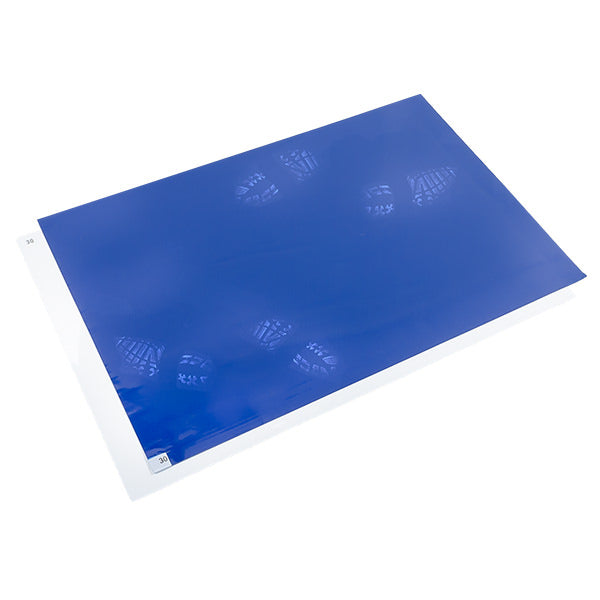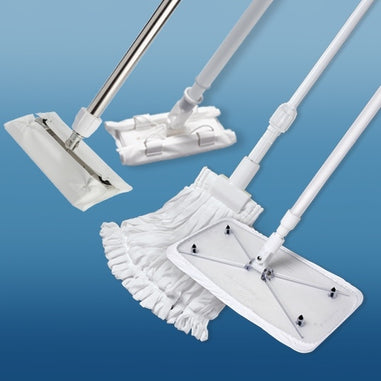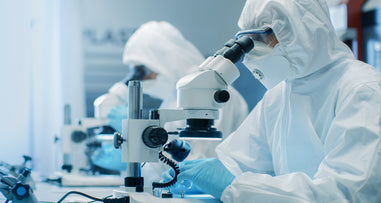- No products in the cart.
In the fast-paced and technologically driven world of today, precision and cleanliness are paramount, particularly in environments where even the tiniest particles can have significant consequences. Cleanrooms, the controlled environments used in industries ranging from pharmaceuticals to electronics manufacturing, demand stringent measures to maintain a contamination-free atmosphere. Among the array of tools and strategies employed, one unsung hero stands out: the humble yet indispensable sticky mat.
Unveiling the Science: How Do Sticky Mats Work?
At first glance, a sticky mat or a tacky mat might seem like a simple concept – a mat with adhesive layers designed to trap dirt and particles from shoes and wheels. However, the science behind these unassuming mats is surprisingly sophisticated. Sticky mats utilize a combination of mechanical and adhesive forces to capture and retain contaminants as they come into contact with the mat's surface.
The surface of a sticky mat is coated with a specialized adhesive that's tacky enough to attract particles, but not overly sticky to hinder movement. As individuals step or roll over the mat, dirt, dust, and debris are transferred from their footwear or equipment to the adhesive layer. The particles adhere to the mat, effectively preventing them from being tracked further into the cleanroom.
Versatile Applications Across Industries
Cleanroom sticky mats find applications in a wide range of industries, each with its unique set of challenges and contamination concerns. Let's explore some notable sectors where these mats play a crucial role:
1. Pharmaceuticals and Life Sciences:
In research laboratories, pharmaceutical manufacturing, and healthcare settings, maintaining sterile conditions is non-negotiable. Sticky mats placed at key entry and exit points prevent the introduction of harmful particles that could compromise sensitive experiments or medical procedures.
2. Electronics Manufacturing:
Electronics components are becoming increasingly smaller and more delicate. Contaminants like dust or hair can disrupt the functionality of microchips and circuits. Sticky mats placed at cleanroom entrances prevent potential damage by capturing these minuscule intruders.
3. Aerospace and Defense:
Precision is vital in aerospace manufacturing, where even the tiniest speck can impact the performance of aircraft or satellites. Sticky mats prevent foreign matter from interfering with intricate assembly processes.
4. Food Processing:
In the food industry, maintaining cleanliness is essential to prevent contamination and ensure product safety. Sticky mats placed near processing areas help minimize the risk of foreign particles entering the production process.
Best Practices for Effective Implementation
Implementing cleanroom sticky mats involves more than just placing them at entrances. To harness their full potential, consider these best practices:
1. Strategic Placement:
Identify high-traffic areas, such as entrances and exits, where the risk of contamination is greatest. Place sticky mats strategically in these locations to capture particles before they spread.

2. Layer Arrangement:
Sticky mats typically come with multiple layers, each of which can be peeled away to reveal a fresh adhesive surface. Regularly peel off the top layer to maintain the mat's effectiveness. The frequency of layer changes depends on the level of foot traffic and contamination.
3. Proper Installation:
Ensure the mat is securely affixed to the floor to prevent movement and tripping hazards. Some mats come with adhesive backing, while others require additional anchoring mechanisms.
4. Routine Maintenance:
Regularly inspect and clean the mats to prevent the accumulation of dirt and debris on the surface. Vacuuming or using a gentle cleaning solution can help extend the mat's lifespan.
5. Employee Training and Awareness:
Educate personnel about the importance of using sticky mats and the proper way to step on them. This awareness fosters a culture of cleanliness and reduces the risk of contamination.
Conclusion: A Simple Solution with Significant Impact
In the grand symphony of cleanroom contamination control, sticky mats may play a humble role, but their impact is far from insignificant. These unassuming mats, armed with their adhesive prowess, form a crucial line of defense against the intrusion of particles that could jeopardize sensitive processes, experiments, or products. Across diverse industries, from pharmaceuticals to electronics, sticky mats prove their worth by silently safeguarding the pristine environments that drive progress and innovation. So, the next time you step onto a sticky mat, take a moment to appreciate the science and dedication that goes into this uncelebrated hero of cleanliness.
For over 40 years, Lab Pro Inc. has been committed to delivering highest quality cleanroom lab supplies, hand tools, lab equipment, chemicals, distance learning kits, and PPE apparel. Renowned by global medical device companies and laboratories, we ensure exceptional quality in every product. Contact us online or call 888-452-2776 to learn more. Discover top-notch lab supplies and elevate your experiments today!












































